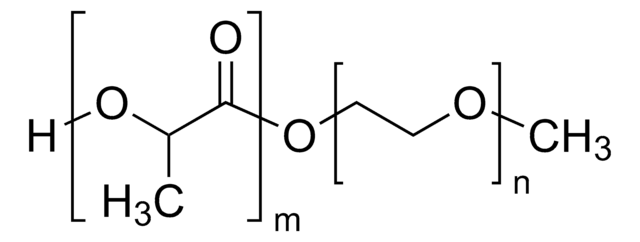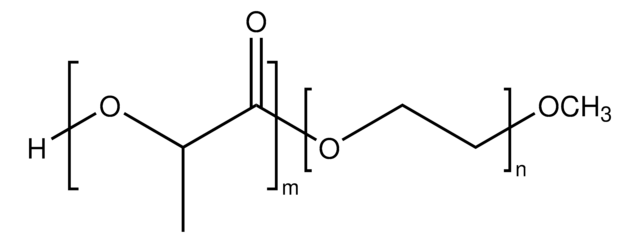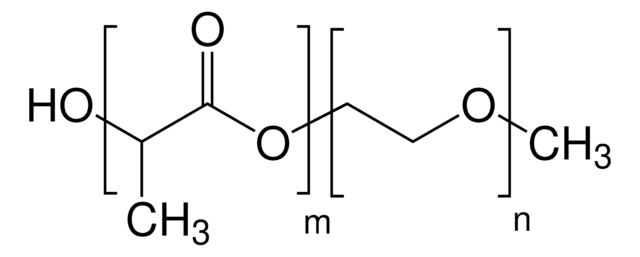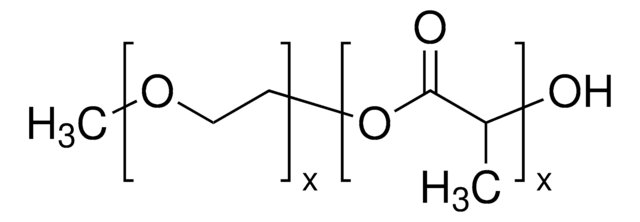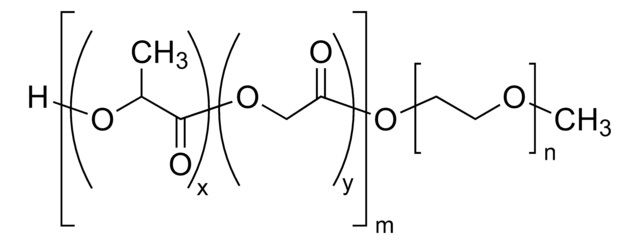764736
Poly(ethylene glycol) methyl ether-block-poly(D,L lactide)-block-decane
PEG average Mn 2,000, PDLLA average Mn 2,000
Synonym(s):
PEG-PDLLA-decane, PEG-b-PLA-b-decane, PEG-PLA
About This Item
Recommended Products
form
pellets
Quality Level
mol wt
PDLLA average Mn 2,000
PEG average Mn 2,000
average Mn 4,000 (total)
degradation timeframe
2-5 weeks
transition temp
Tm 29-33 °C
PDI
<1.1 (typical PEG)
<1.2
<1.3 (overall)
storage temp.
2-8°C
Related Categories
General description
Application
Features and Benefits
- Good biocompatibility, low immunogenicity and good degradability.
- Properties can be easily modulated by changing the block copolymer segment sizes to suit a particular application.
Storage Class Code
11 - Combustible Solids
WGK
WGK 3
Flash Point(F)
>230.0 °F
Flash Point(C)
> 110 °C
Choose from one of the most recent versions:
Certificates of Analysis (COA)
Don't see the Right Version?
If you require a particular version, you can look up a specific certificate by the Lot or Batch number.
Already Own This Product?
Find documentation for the products that you have recently purchased in the Document Library.
Customers Also Viewed
Articles
One of the common difficulties with intravenous drug delivery is low solubility of the drug. The requirement for large quantities of saline to dissolve such materials limits their clinical use, and one solution for this problem that has recently generated interest is the formation of drug-loaded micelles.
Local delivery of bioactive molecules using an implantable device can decrease the amount of drug dose required as well as non-target site toxicities compared to oral or systemic drug administration.
The development of drugs that target specific locations within the human body remains one of the greatest challenges in biomedicine today.
Aliphatic polyesters such as polylactide, poly(lactide-co-glycolide) and polycaprolactone, as well as their copolymers, represent a diverse family of synthetic biodegradable polymers that have been widely explored for medical uses and are commercially available.
Our team of scientists has experience in all areas of research including Life Science, Material Science, Chemical Synthesis, Chromatography, Analytical and many others.
Contact Technical Service